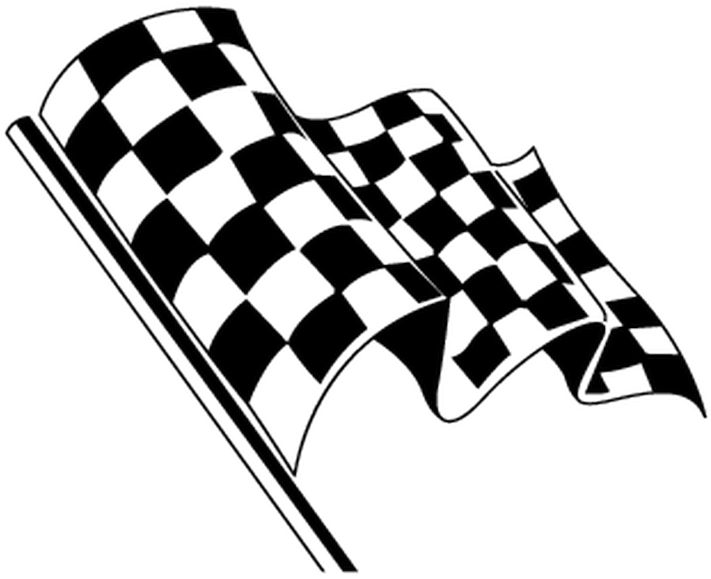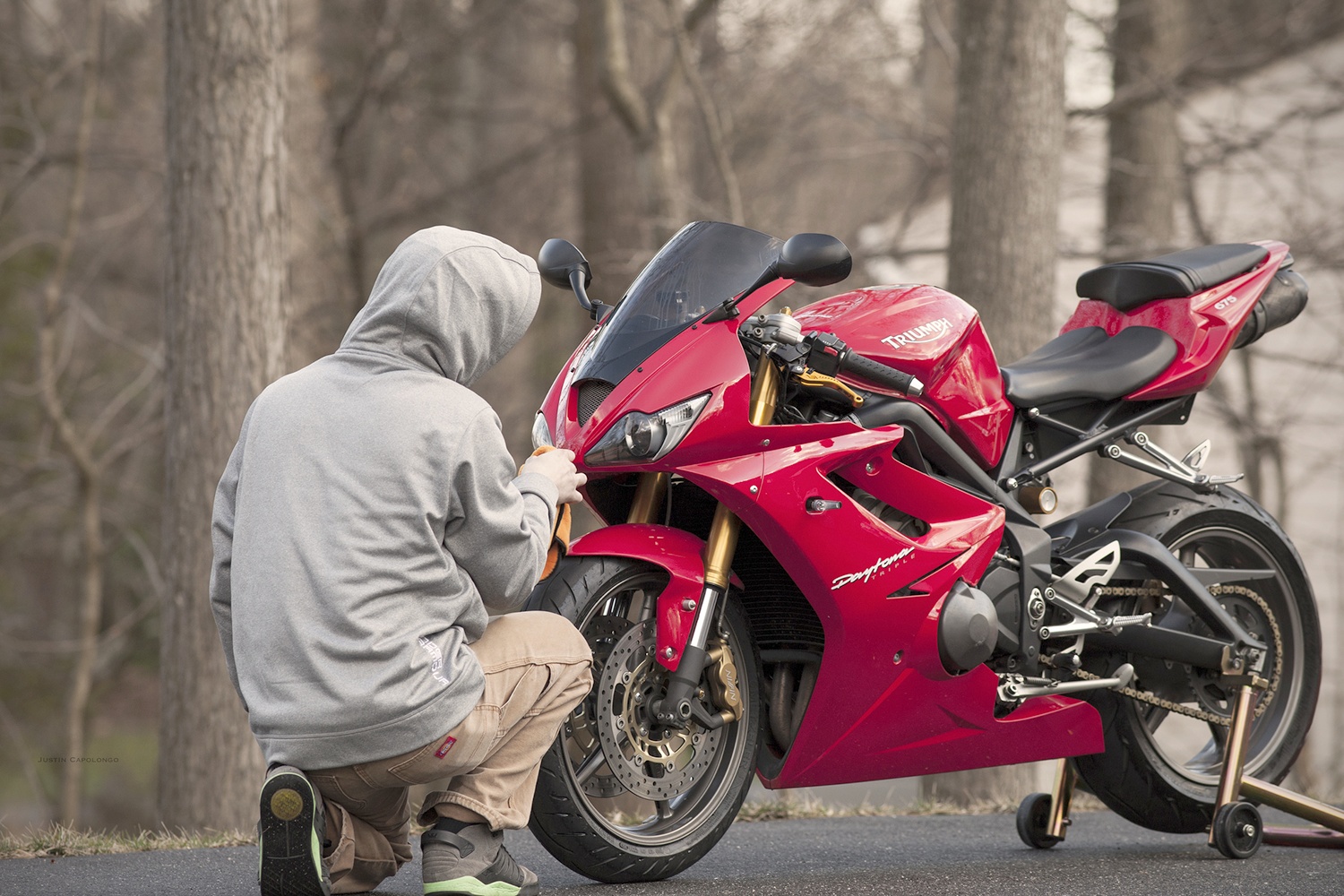Our blockbuster FTC disclosure awaits here. The following article was last updated on Oct 22, 2025 ...
How To Wash, Degrease And Detail Your Motorcycle Safely And Effectively
Beyond the use of a few well-known commercial products, cleaning a motorcycle is far different from washing a car. Many parts on motorcycles sit exposed while other components often obscure them. When bath time comes, patiently distinguishing between what is rigid vs. what is fragile ensures that we avoid causing undue harm. Think of the full routine as a cycle to wash, degrease and detail, applied with patience and care.
“Our wash, degrease and detail instructions explain which parts need what, keeping a motorcycle clean, safe and damage free.”
These instructions aim to provide a uniform perspective on how to judge which part of a motorcycle gets what kind of treatment. Having received and compared a lot of advice over the years, this order of operation is nothing more than a filtered comparison of the results. Feel free to alter or rearrange things to suit the individual wash, degrease and detail needs of your motorbike.
For simplicity's sake, we divide the entire process into three stages: washing, degreasing and detailing. Washing rids us of visible dirt and grime, degreasing eliminates residue buildup and detailing brings out a shine. Breaking things up this way also allows for separate scheduling, whether you plan to wash, degrease and detail all at once or over a few days.
Let's start by checking to be sure you've got these products or a preferred substitute on hand ...
- garden hose
- spray nozzle
- water bucket
- organic dish soap
- large automotive sponges (x2)
- large drying towels (x2)
- disposable respirators
- protective eyewear
- pvc gloves
- degreaser
- generic rags
- soft bristle toothbrush
- Honda cleaner
- microfiber towels
- WD-40
- ArmorAll
Stage One: Washing Your Motorcycle
The debate continues as to whether or not it's okay to use a "pay-and-spray" car wash. I'm of the opinion that it's fine so long as you avoid pointing the pressure hose directly at the bike (especially the gaskets, battery and exhaust). These establishments can be pretty useful during longer trips, though the bike usually requires a more complete effort upon return.
With the below instructions in mind, however, a self-serve car wash is more hassle than its worth. You'll find yourself in transit with a bucket full of sponges and chemical solvents strapped to the pillion. Most of what we intend to clean can be targeted using less water pressure, so if you have to incorporate a quarter system, just be careful to mist the bike from further away.
Assuming we're at home and using lower water pressure with a spray nozzle attachment, gather the following items from the above list and get started:
- tap-connected garden hose with spray nozzle in place
- a bucket full of warm, overly soapy water, using organic dish soap for suds
- two large automotive sponges, one for plastics and painted parts and the other for grime
- two large drying towels, one for plastics and painted parts and the other for what was grimy
Note: By painted parts, what I mean are the parts you'd use to describe the color of your motorcycle.
- If you have an air compressor, bring it to a full charge, open/remove your seat and from a distance, blast air over the entire chassis so as to loosen and expel any floating debris including leaves, sand, gravel etc.
- Gently spray the bike directly with water using minimal pressure and extremely short grazes (flip the sprayer back and forth). We're not trying to loosen anything up. We just want the bike to be wet before we sponge on a layer of soap.
- Using a well-sudsed sponge, absorb a formidable amount of soapy water before wringing it over top of the bike from front to back. Then, suds again and "sling" the sponge's contents at various, non-electrical sections of your bike's wheels, engine, gauges, fenders and subframe.
- Absorb more soapy water into your sponge and begin directly wiping down all of the plastics and painted parts with mild pressure.
- With the bike lathered and aesthetics wiped down, it's time to put the second sponge to use on the nastier bits. Get sponge number two soaped up and full of water.
- Wipe around the rims, spinning the rear wheel in neutral for easier cleaning. Don't be afraid to get your chain coated as well.
- Be careful while sponge-cleaning your engine. Yes, you want to wipe away grime but there are electrical connections that are better left undisturbed.
- Using step two as an example, rinse the bike until all signs of soapy water are gone.
- Just as you used two separate sponges, one towel gently dries off the painted parts while the other touch-dries the engine components.
- Take a break(?)
Stage Two: Degreasing Your Motorcycle
Even after washing your motorcycle, you may find that certain deposits and residues build up over prolonged use. Oils and other general road grime can make their way into hard-to-reach locations, some of them close to sensitive materials. To restate from the writing above, we want to avoid impatient, aggressive cleaning or else unseen damage might come back to bite us. This is the middle act when you wash, degrease and detail so take your time here.
Pretty harsh stuff goes into most degreasers. Manufacturers design them to break down grease on single-piece metallics such as a motorcycle's front or rear axle. Whenever I replace my tires, I set the axle aside on a paper towel, spray it down with degreaser, count to thirty and wipe it dry.
Use degreasers with caution while cleaning a motorcycle as well. Below is the process that I use. Before you get started, gather the following items mentioned above:
Steps to complete:
- In a well-ventilated area that's devoid of open flames, put on a disposable respirator, protective eyewear and PVC gloves. If at any point during this stage of the cleaning process one of these should break, rinse yourself off and replace the compromised item at once.
- Set aside two or three rags, a toothbrush and a bottle of degreaser.
- Looking underneath your motorcycle, seek out UNPAINTED, solid metal parts where sludge may be building up. Consider what can be cleaned safely and sensibly without harm.
- Spraying an excess of degreaser directly onto your rag (away from the bike), begin applying it to largely open sections of dirtier individual parts. DO NOT APPLY DEGREASER TO gaskets, rubber, plastics, paints or electrical components. It'll likely eat these things up, causing leaks, corrosion, and/or malfunction.
- Rub carefully in an outward spiral motion.
- For every part you've honed in on, use an alternate rag to dry the target area after between fifteen and thirty seconds, depending on the degree of accumulated road sludge.
- Repeat steps 4 through 6 until all obvious, uncomplicated areas are clean.
- With some knowledge of what's where, be it through your manual or prior maintenance, spray degreaser onto a toothbrush and use it to get into hard-to-reach spaces.
- Dry the hard-to-reach locations using another rag. What I like to do is heavily wrap a screwdriver into said rag before gently pressing it into such locations for a brief moment.
- Repeat steps 8 and 9 accordingly but without becoming too particular. Degreaser being toxic, over-involving it will do more harm than good.
Stage Three: Detailing Your Motorcycle
Oddly enough, you can also view motorcycle detailing independently as a "caveman shower" of sorts. If you've just come back from a long riding trip, didn't experience any notably bad weather and are satisfied with the overall cleanliness of your motorbike, there's no shame in putting this practice to use without touching on the previous two stages. This is even more true if you'll be riding again in the near future. On busier weeks, I'll simply wash, degrease and detail in shorter, separate bursts.
The reasons for detailing your motorcycle go well beyond visual appeal. For starters, clean the mirrors and instrument cluster to enable safer operation. It also incorporates a visual schematic, focusing on mechanical symmetry from front to back, top to bottom and left to right. Did I mention that it looks good, too? While that shine certainly reminds us how great these bikes are, detailing also jackets your motorbike in a protective coating.
Before you begin, be sure you have the following items on hand:
Steps to complete:
- Spray a moderate amount of Honda cleaner over individual painted and plastic parts, wiping them off with a microfiber towel as you would a window with window cleaner. It's best to think of each part as a single piece of the puzzle, finishing one before moving on to another. Short of electronics or anything that becomes hot to the touch during operation, you can safely use Honda cleaner on just about any part of your motorcycle.
- Apply a heavy mist of WD-40 to a generic rag before rubbing it onto less accessible painted metals. One specific example I'll take from my own bike is the engine, which is painted black. Exhaust pipes, framework and bracings are also good candidates. DO NOT SPRAY WD-40 DIRECTLY onto whatever you're cleaning and be sure not to use it near gaskets, rubber or wiring as they'll immediately begin to deteriorate.
- Apply a fabric treatment to your seat that's recommended for its material. ArmorAll is typically good for vinyl. Spray it on directly before wiping it evenly across the entire surface.
Congratulations! The wash, degrease and detail process is "done did" and your motorbike's clean. Now get out there and dirty it up again or, if you're preparing for winter storage, continue with our complete guide to motorcycle winterization. Oh, and maybe schedule that wash, degrease and detail before the season turns.

How Do You Go About Cleaning Your Motorcycle?
With so many makes and models rolling around out there, we can't easily combine instructions for cleaning a motorcycle into a single page. What methods do you prefer? How did you compile this system? What are its key benefits? Your input is invited. Leave a comment and/or write an article!




Comments
My bike cleaning consists of Meguiars or TurtleWax products.
Spray Detailer, Spray Wax, Kerosene, Maxima Chain Wax.
I usually clean my bike once per week. Use the spray detailer, and a microfiber cloth to clean the bike, then use the spray wax and microfiber cloth to wax/buff it.
Every 800-1000km thoroughly clean the chain with kerosene/toothbrush (I also remove the front sprocket cover to clean any gunk/dirt), then take it for a quick ride, and then spray on the chain wax.
I've never washed my bikes with water, soap or a car wash as spray detailers always suffice.
Thoughts gone wild? Write an article!